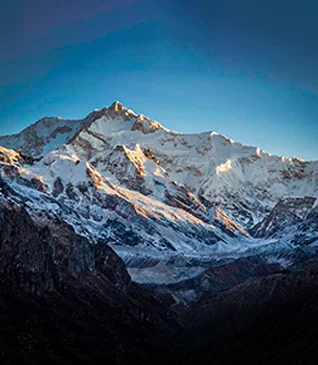Bestride your bike. Take a deep breath. And pedal-on for Himalayan mountain biking. It certainly is great fun and thrill. But, it is important to know the basics of mountain bike riding to ensure safety and make the ride even more enjoyable. Mountain cycling experts at Trek The Himalayas count on these 6 prime riding techniques that every mountain biking enthusiast must follow:
- Pedalling Technique

Pedalling techniques vary across bikers. However, there is a common misconception among many that pulling on upstroke is the right way to go. But, this is more strenuous to the legs and is not recommended to the bikers who ride very frequently over long distances. It may even result in serious injuries to hip flexors and hamstrings. To avoid injuries and maximize efficiency, exert most of the pressure in the downward stroke.
- Descending

Descending could be the scariest part of the entire mountain biking experience in the Himalayas, especially if you are a beginner. But, over time, you can master the technique. Getting on the drops is important in order to lower the centre of gravity. At the same time, it gives you more control over your bike and is aerodynamically more favourable. Descent is apparently faster than the ascent, thus it becomes all the more important to keep looking ahead. Also, do not tense up too much on the bars as it may make handling difficult.
- Shoulders
Don’t hump up a lot and do not hunch the shoulders. This way you will feel less fatigued and you will be able to avoid cramps and soreness in the muscles. Keeping the head in the same position for a long time could cause stiffness in the neck muscles. Therefore, tilting your head once in a while would be a good idea.
- Change Position on the Saddle

Slide your body on the saddle forward or rearward from time to time. This way, the tension will pass from one muscle group to another allowing you greater efficiency. This could prove to be even more beneficial on the long Himalayan climbs as it will give time to the muscles to rest for a while. When you are more towards the front edge of the saddle, the tension is focused on the quadriceps. On the other hand, sliding towards the rear will shift the tension to the gluteus muscles and hamstrings.
- Cornering
Cornering is an important aspect, which when mastered, adds more fun and satisfaction to the ride. However, when done sloppily could lead to crashes, injuries, and bruises. It takes some practice and experience to do this the right way and in the beginning, you may not be very comfortable; so, go slow. Curl your fingers over the brakes allowing yourself more control and your bike more traction. Make sure you are always alert about things appearing suddenly from the corner.
- Change Hand Position

Changing the hand position at regular intervals is important. While cruising along casually at a leisurely pace, hold the hoods of the brake lever. While riding at a high speed, hold the drops. If the climb up the Himalayan Mountain is long, grasping the top of the bar would be a good idea as it will let you sit upright on the bike and will broaden your chest for comfortable breathing. Remember that at all times each thumb and at least one finger must be curled around the handle to make sure you do not lose control.
It is important to understand that mountain biking is all about a fit body and the right technique of riding that can take you places far and wide around the world, literally.
If you have your own secrets of mountain biking, do share them with the world in the comments.





.webp)










.webp)


